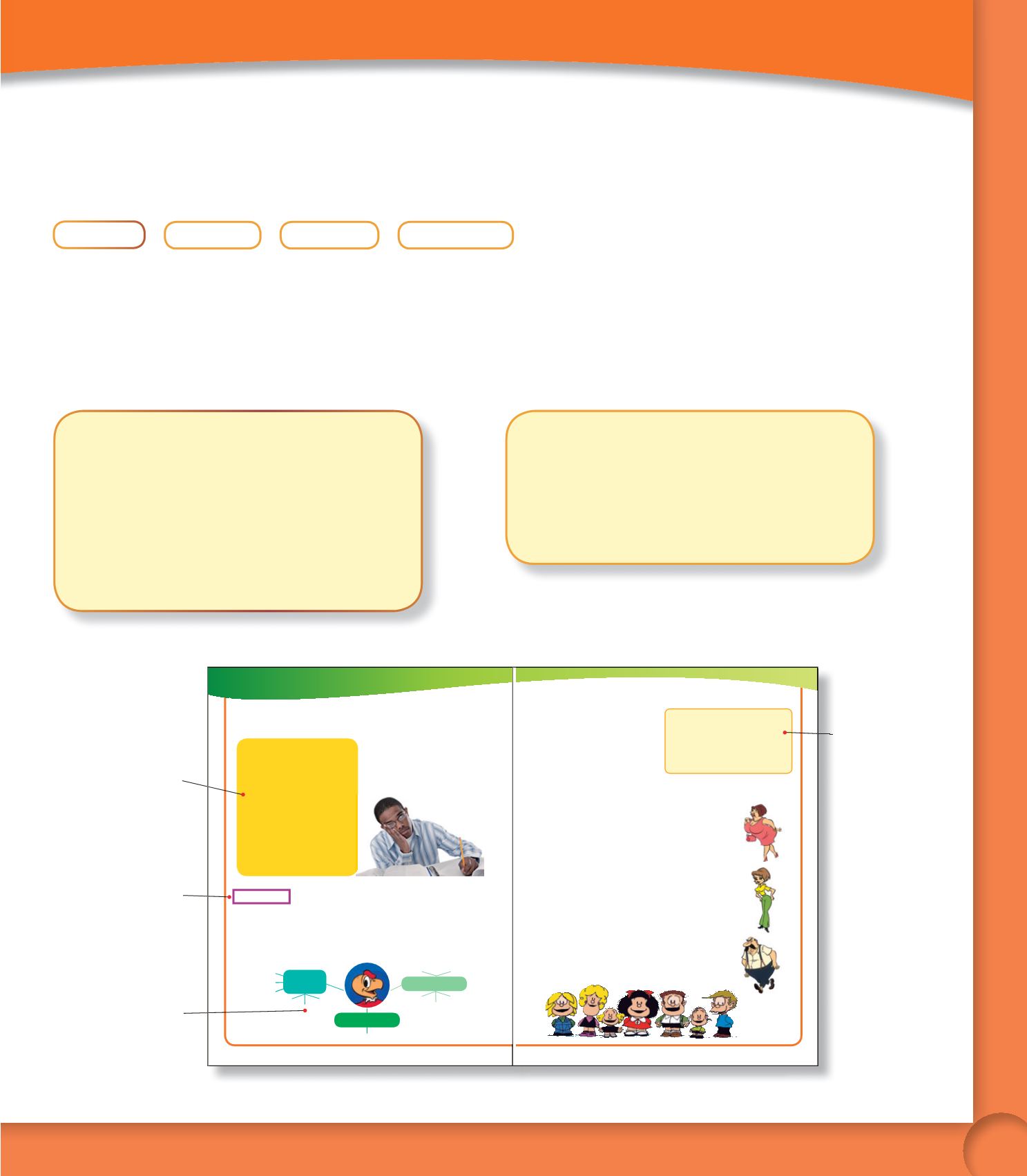

25
Compositions are developed within the framework of the
writing process.
In Levels 3 and 4, writing is developed in a four-step process:
1
Piensa
2
Escribe
3
Revisa
4
Comparte
In this process, students frequently exchange their writing with their peers in the tasks of
planning and revision, thus taking full advantage of collaborative work.
ESCRITURA
Piensa
■
Piensaenelpersonajequevasadescribir.¿Qué ideaquieresdar
deélodeella? ¿Esunpersonajeprincipalounpersonaje secundario?
¿Quéhaceen lanovelayporqué?
■
Piensaen todos losaspectosquepueden serútilesparadescribir
detalles importantesdelpersonaje: rasgos físicos,personalidad,
experiencias significativas,etc.Creauna redparaorganizarestos
puntos importantes.
Character sketch
One of the ways that authors,playwriters,
and scriptwriters prepare realistic,
three-dimensional characters is by creating
a
character sketch
before they write the
final work.
A character sketch introduces a character
through a collection of significant details,
so that the audience gets to know the
person’s appearance,personality, values,
and motivation.
Not as complete as a
biography
,a
character sketch gives a basic idea about
what to expect from the character—and
what
not
to expect.
Unautor famosoestáescribiendounanueva
novela sobreunode lospersonajes
presentados en estaunidad,yquiere tuayuda
para crearunbosquejo
(sketch)
biográfico.
Eligeelpersonajeque teparecemás
interesante.
Un personaje interesante
Rasgos
físicos
Personalidad
pequeño
ojos grandes
delgado
pesimista
celoso
creativo
Sus padres eranmuy estrictos.
Experiencias
Revisa
■
Intercambia tu texto con tu compañero(a).
■
Analizael textode tu compañero(a):
– ¿Quéopinasdeesadescripción? ¿Esunadescripción clarayordenada?
¿Seutilizan losadjetivosnecesariosparadescribiralpersonaje?
Anota los cambiosque creasquehayquehacerparamejorarel texto.
– ¿Cómoestáescritoel texto? ¿Lasoracionesestánbien construidas?
¿Laspalabras son correctasy estánbien escritas?Subraya laspalabras
o las frasesque creesquehayque corregir.
■
Devuelve el textoa suautor(a) con tus sugerenciasyanaliza las
sugerenciasqueél/ella teproponeparamejorar tu texto.
■
Corrige tu textoparaque ladescripción sea interesantey correcta.
Comparte
■
Reescribe tu texto conbuena letra, incorporando todas las correcciones.
■
Dibujauna ilustraciónparaacompañar tu texto. Incluye colores
yunescenarioqueayudena comprender la ideageneralque
quieres transmitir.
■
Presenta tu textoa la clase. ¡Buena suerte!
Escribe
■
Utilizando la redde ideas, redacta
elbosquejodelpersonaje.Escribe
por lomenos trespárrafos:uno
para cada temade la red.Recuerdaque
debesdardetalles significativos
paraqueel lector cree supropia
ideadelpersonajeynoolvides
usar lasExpresionesútilespara
darmás fluidez
(fluidity)
al texto.
Expresiones útiles
Al principio…/Primero…
At first …
Luego…/Después…
Then …
Finalmente…
Finally …
Entonces…
Then …
De niño(a)…
As a child …
Information about
the type of writing
being practiced.
Graphic organizers
as a planning tool.
Useful
vocabulary.
Steps to the
writing process.
T27
Writing Program
Level 3
●
Un personaje interesante (bosquejo biográfico)
●
¿Un poema o un dibujo? ¡Un caligrama!
●
Un ensayo de moda
●
Una receta típica
●
Una carta formal
●
Un cuento
●
Un reportaje medioambiental
●
Y tú, ¿qué opinas? (un texto de opinión)
Level 4
●
Un correo de presentación
●
Recomendaciones de viajes
●
Un currículum vítae
●
Un blog de viajes
●
Un ensayo
●
Una reseña
Unit structure


















